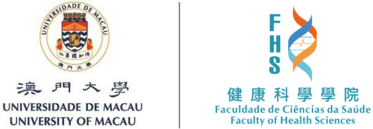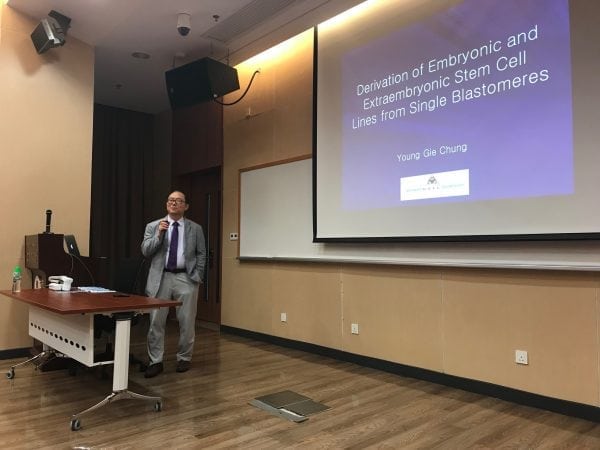| Talk title | Generation of pluripotent stem cells using SCNT and IPS cell technologies in African Green Monkeys |
| Speaker | Prof. Young Gie CHUNG Adjunctive Professor of Department of Psychiatry, Yale Medical School |
| Date & Time | 13 July 2018 (Friday) 16:00-17:00 |
| Venue | Room G004, E12 Building (University of Macau) |
| Abstract | Extremely small numbers of pluripotent stem cell lines have been derived from monkeys and none from African greens, limiting studies of possible cell replacement therapy for Parkinson’s disease (PD). Therefore, our goal was to establish stem cell lines by using our somatic cell nuclear transfer (SCNT) and iPS techniques. As we have created and validated a PD model in African green monkey, and used it extensively to study cell therapies from human fetal brain tissue, neural stem, iPS, and parthenogenic cells, we chose this species to generate pluripotent stem cells to carry out critical preclinical studies of potential benefits of autologous cells differentiated to dopamine (DA) neurons. Using 24 female monkeys as egg donors and 18 adult somatic nuclear (fibroblasts) donors, we derived 11 SCNT ES cell lines and 5 iPS cell lines. They all expressed the typical stemness marker genes including OCT-4, NANOG, SSEA-1, and TRA1-60, and formed all 3 germ layer derivatives in the teratomas in immune deficient mice, proving that they are truly pluripotent stem cells. All the cell lines also kept intact chromosome number (60, XX or XY) even after extensive cell passages ( 30) in serum free and feeder cell free culture system. Furthermore, all the stem cell lines were differentiated into DA neurons in vitro expressing TH when the A-9 DA cell differentiation protocol was applied. There was no difference in the ease of DA cell differentiation between SCNT ES cell lines and iPS cell lines. We also injected GFP labeled DA cells with varying degrees of differentiation derived from 4 different NT cell lines into the nigrostriatal systems of 6 monkeys. Brain removal after 3 months revealed that all 4 cell lines survived, and 1 with partially differentiated DA cells formed a tumor. All the surviving DA cells were differentiated for 14-28 days. Thus, it seemed that DA cell differentiation duration should be longer than 14 days when the A-9 DA cell protocol is used to avoid a possible tumor development. In conclusion, we have developed a very effective SCNT protocol which culminated in multiple pluripotent stem cell lines in the African green monkey allowing more systematic comparative studies for treating PD in the future.ion efficiency of how BMSCs can be reprogrammed by the protein induction to generate CPCs. |


